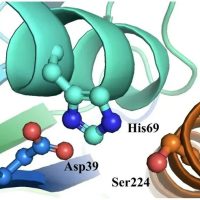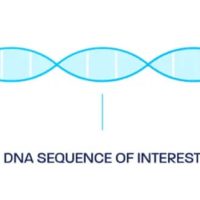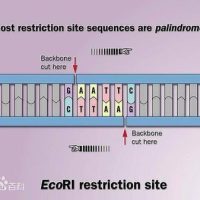Overview:The year 2023 marks the 70th anniversary of the discovery of the double-helix structure of DNA. On February 28, 1953, Watson and Crick succeeded in deducing a three-dimensional structural model of the genetic material DNA, based on X-ray diffraction photographs taken by the female scientist Franklin. The beauty of the simplicity of the double-stranded base-pairing pattern visually suggested the mechanism of replication of the genetic material, instantly opening the fast track to molecular biology
Sixty years ago, on a winter's day, Stockholm's Concert Hall was filled with people as three young scientists were awarded the Nobel Prize in Physiology or Medicine: James Watson of the United States, and Francis Crick and Maurice Wilkins of the United Kingdom. Together they shared the discovery of the double helix structure of DNA, contributing to "the structure of nucleic acid molecules and its significance for the transmission of information in living organisms". Nowadays, the three-dimensional model of the DNA double-helix structure has been spread in biology textbooks in secondary schools and universities, and has become common knowledge in basic education.
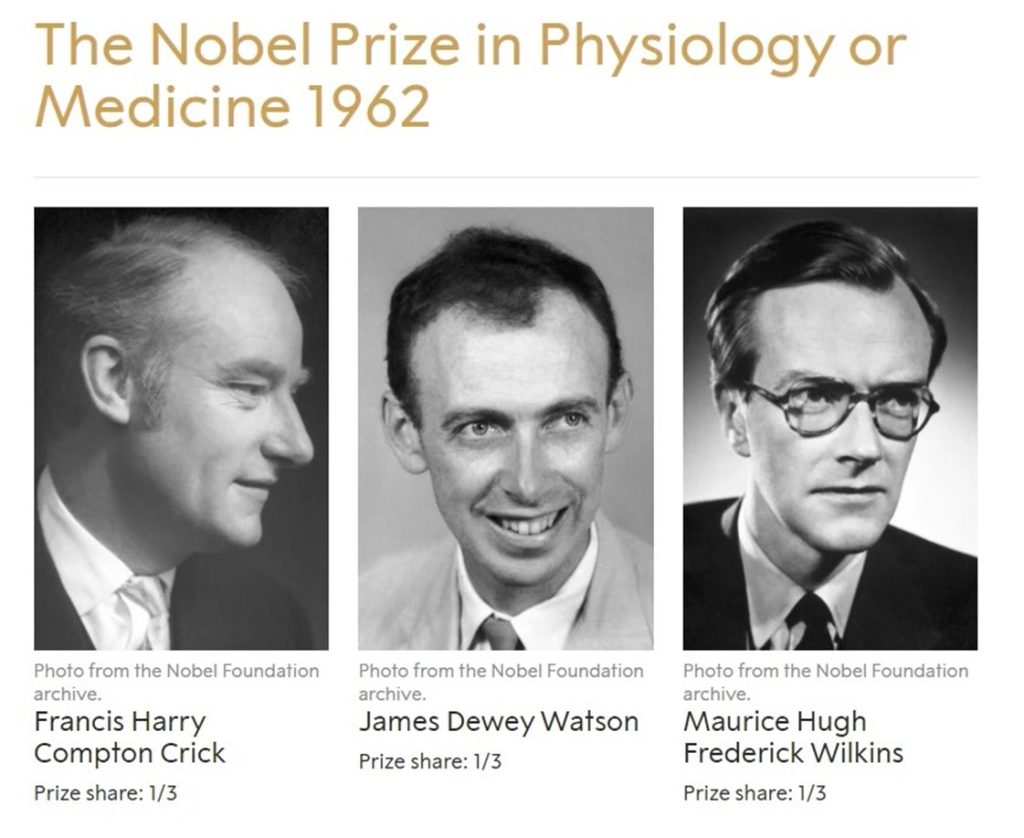
▲Three scientists shared the 1962 Nobel Prize in Physiology or Medicine (Photo credit: The Nobel Prize in Physiology or Medicine 1962 )
In fact, as early as 1869, the Swiss biochemist Michel discovered the existence of nucleic acids, but at that time, people's research was focused on proteins, and there was a lack of attention to nucleic acids. Mainstream biologists in the 1940s still believed that proteins were the primary object of genetic research, until 1944, Avery, McLeod and McCarty published an important paper on the "transforming factor", the first time to experimentally prove that this transforming factor is DNA, and only then unveiled the prelude to DNA as the genetic material. In the same year, Schrödinger's book What is Life? which proposed that the key issue in the study of life lies in the transmission of information.
But before Watson and Crick's 1953 paper on the double-helix structure of DNA, scientists, while recognizing that DNA is the genetic material, did not know the exact structure of DNA and how it transmits genetic information.
In 1951, Watson met his most like-minded partner in life, Crick, who also believed that DNA was more important than proteins, at the Cavendish Laboratory at Cambridge University. The two men hit it off immediately and decided to take a page from the research methods of Linus Pauling, a structural chemist who by then had already had a modest success with the discovery of the alpha helix structure of proteins, namely to make molecular models and, from there, to explore the relationships between atoms and solve the problem of the structure of DNA.
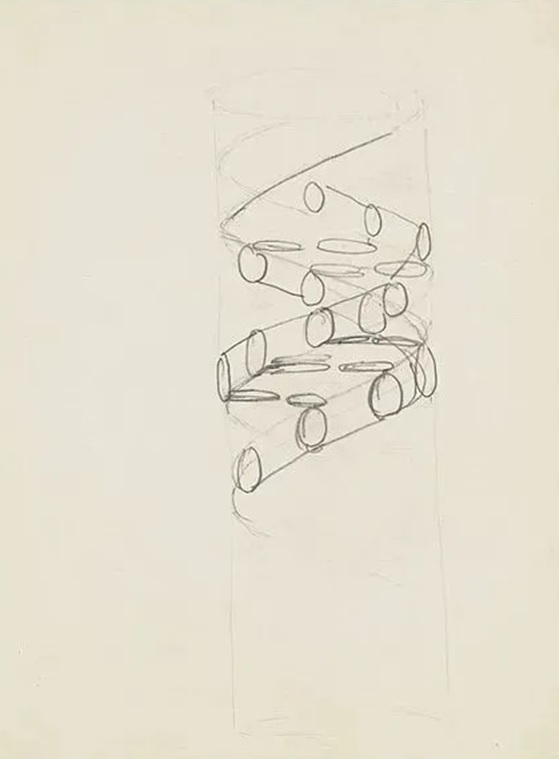
▲DNA structure drawn by Watson and Crick (Image credit: See page for author, CC BY 4.0 , via Wikimedia Commons)
Watson later studied X-ray diffraction techniques and crystallography at the Cavendish Laboratory with a view to confirming the helical structure of DNA with a research group at King's College London consisting of Wilkins and Franklin. The first model proposed by Watson and Crick was the trinucleotide chain model, which was however rejected in its entirety by Franklin's quantitative measurements. The construction of a molecular model of DNA centered on sugars and nucleic acids in the Cavendish lab was in a slump for a while. Crick's doctoral supervisor, Professor Bragg, even ordered the duo to abandon their research on DNA structure. As a result, Crick sent the fixtures he used to study DNA structure to Wilkins at King's College London, with the hope that he would continue the DNA molecular structure enterprise. Wilkins called the gesture "an excellent example of the spirit of cooperation that accelerates the process of scientific research".
Although the Cavendish lab ostensibly suspended its DNA work, Watson was still finding inspiration for DNA research by studying the nucleic acid components in tobacco mosaic viruses, and learned to take pictures of tobacco mosaic viruses showing helical structures with an X-ray camera.
Fifteen months after Watson and Crick proposed the unsuccessful "triple nucleotide chain model", Bowring proposed a similar "triple helix model", but Watson was keenly aware of its irrationality: the phosphate group of this model was not ionized, or The nucleic acids in Pauling's model did not constitute an "acid" at all. This discovery was a relief to the Cavendish Laboratory and King's College London research groups, who had been working in partnership on the structure of DNA, but at the same time they accelerated the pace of their research under the pressure of Bowring's rivalry.
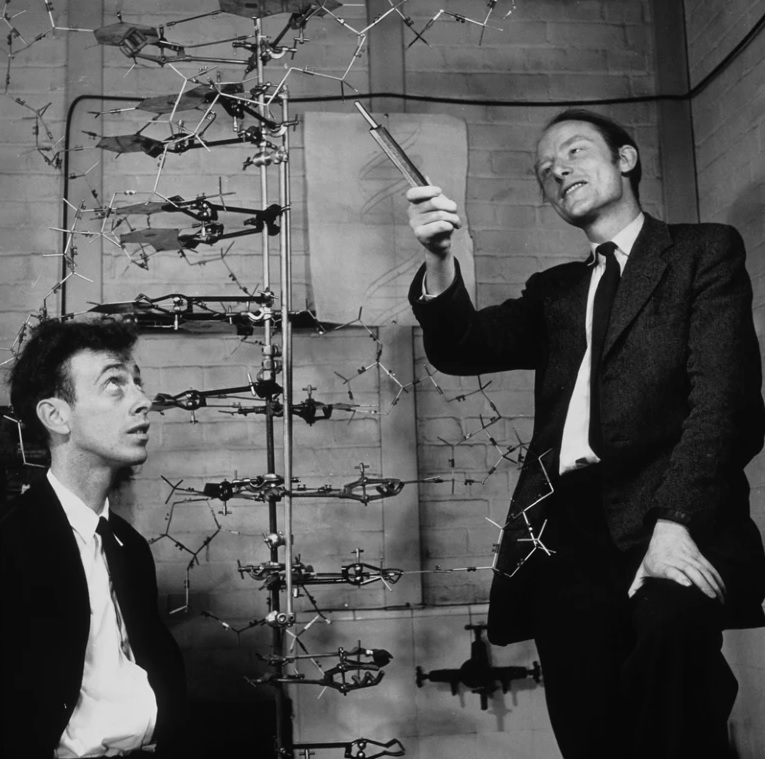
▲Watson and Crick exploring models (image source web)
A turning point in the study of the molecular structure of DNA was the famous "Photograph 51". This was an X-ray diffraction photograph of B-type DNA, taken by Franklin and given to Wilkins for his use. This photograph confirmed the helical structure of DNA. Based on this picture of the B-type structure, Watson decided to choose between the double helix and the triple helix. So in 1953, Watson and Crick began modeling the DNA double helix. Watson was an expert in phage genetics, while Crick was good at physics and mathematics; the two worked together under the cross-combination of different sciences, and properly solved the riddle of DNA molecular base pairing and hydrogen bonding, and put forward the famous principle of complementary pairing of DNA molecular bases.
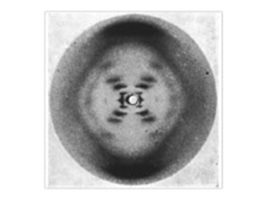
▲Photo 51 (Image credit: MRC laboratory of molecular biology)
Wilkins and Franklin of King's College London soon also found that their X-ray data could provide strong evidence for the double helix structure. After compiling them, Watson and Crick's paper was published in Nature in 1953, and the structure of the DNA molecule was finally settled.
Watson, Crick, and Wilkins were awarded the 1962 Nobel Prize in Physiology or Medicine, and Franklin, who should have shared in this achievement, died without the prize, but his contribution to the study of the structure of the DNA molecule will always be remembered. Not all of these scientists came from the field of biochemistry, but all of them used their expertise to push forward the model of the double helix structure of DNA. The structure of the DNA molecule can be said to be a spark of wisdom from the disciplines of physics, chemistry, biology and mathematics.
Source: China Science Popularization Network www.kepu.gov.cn



